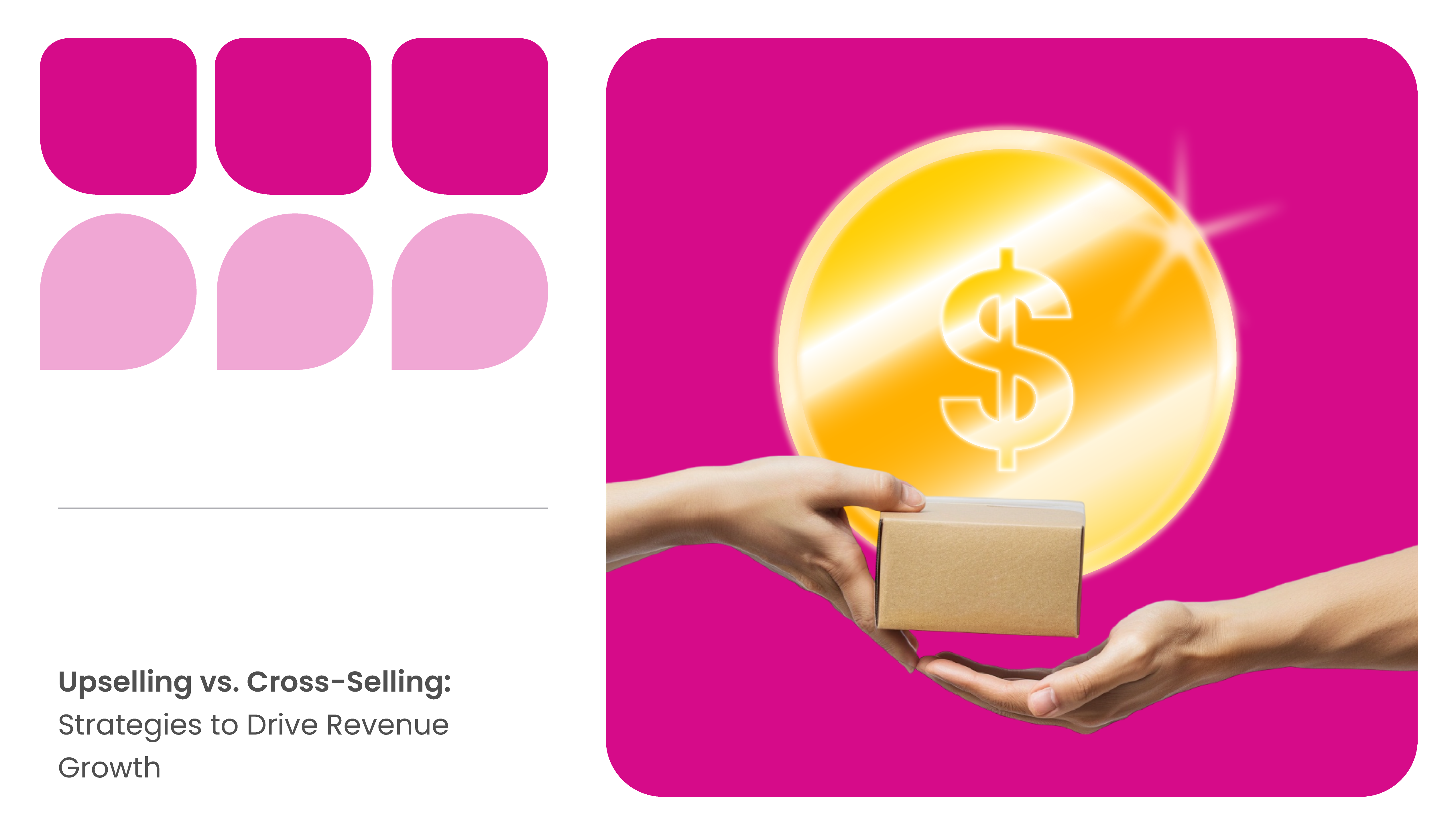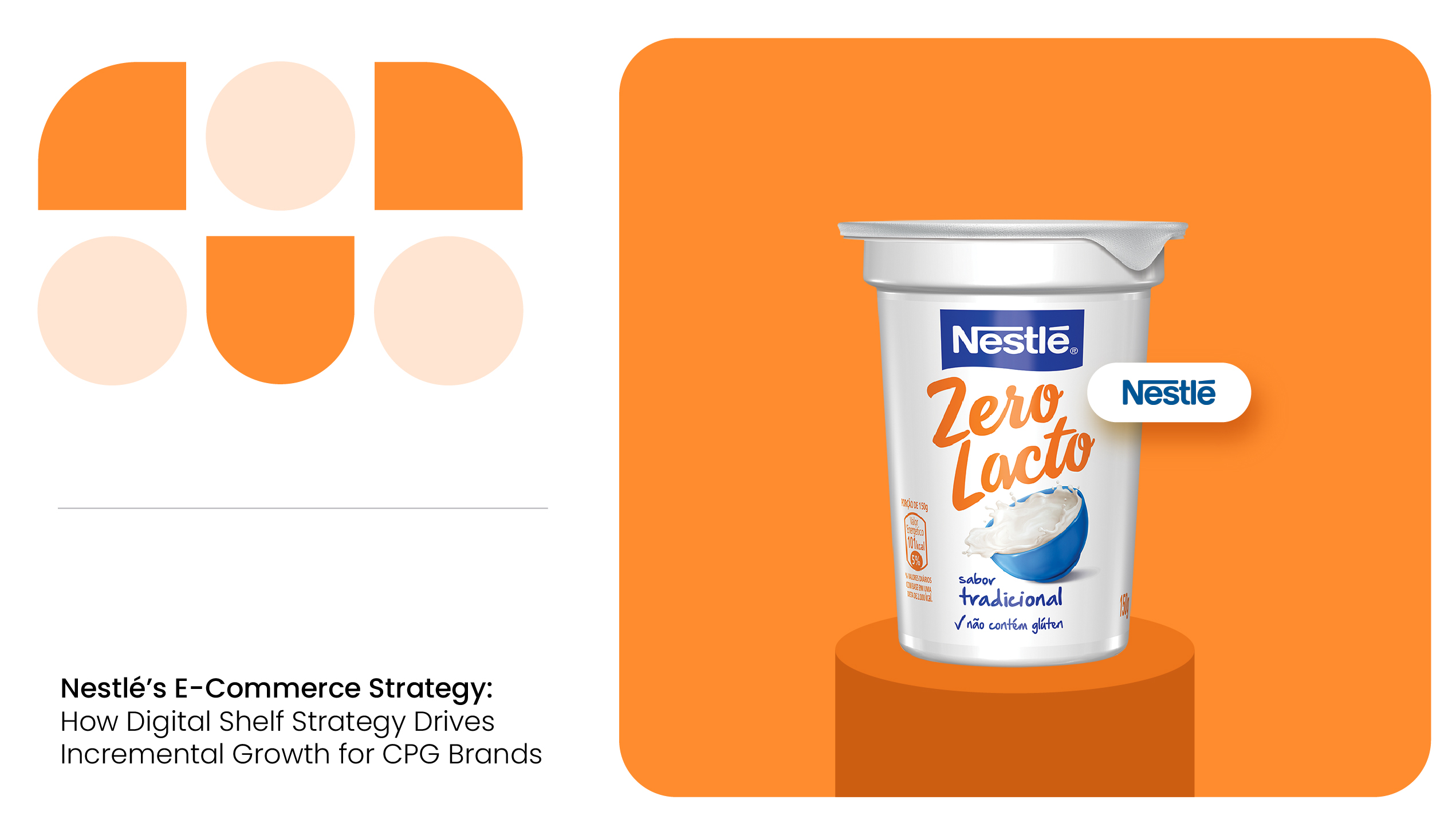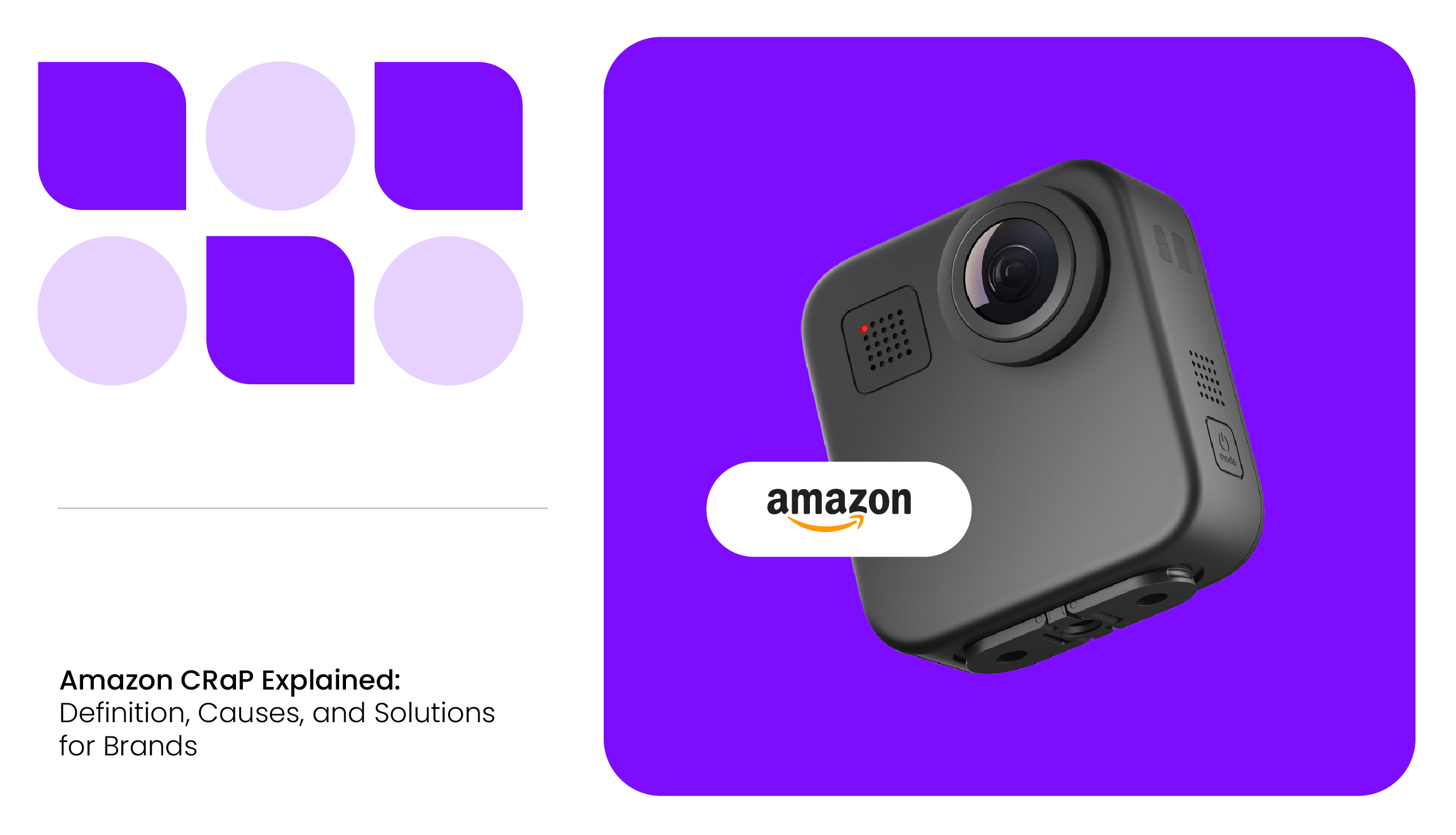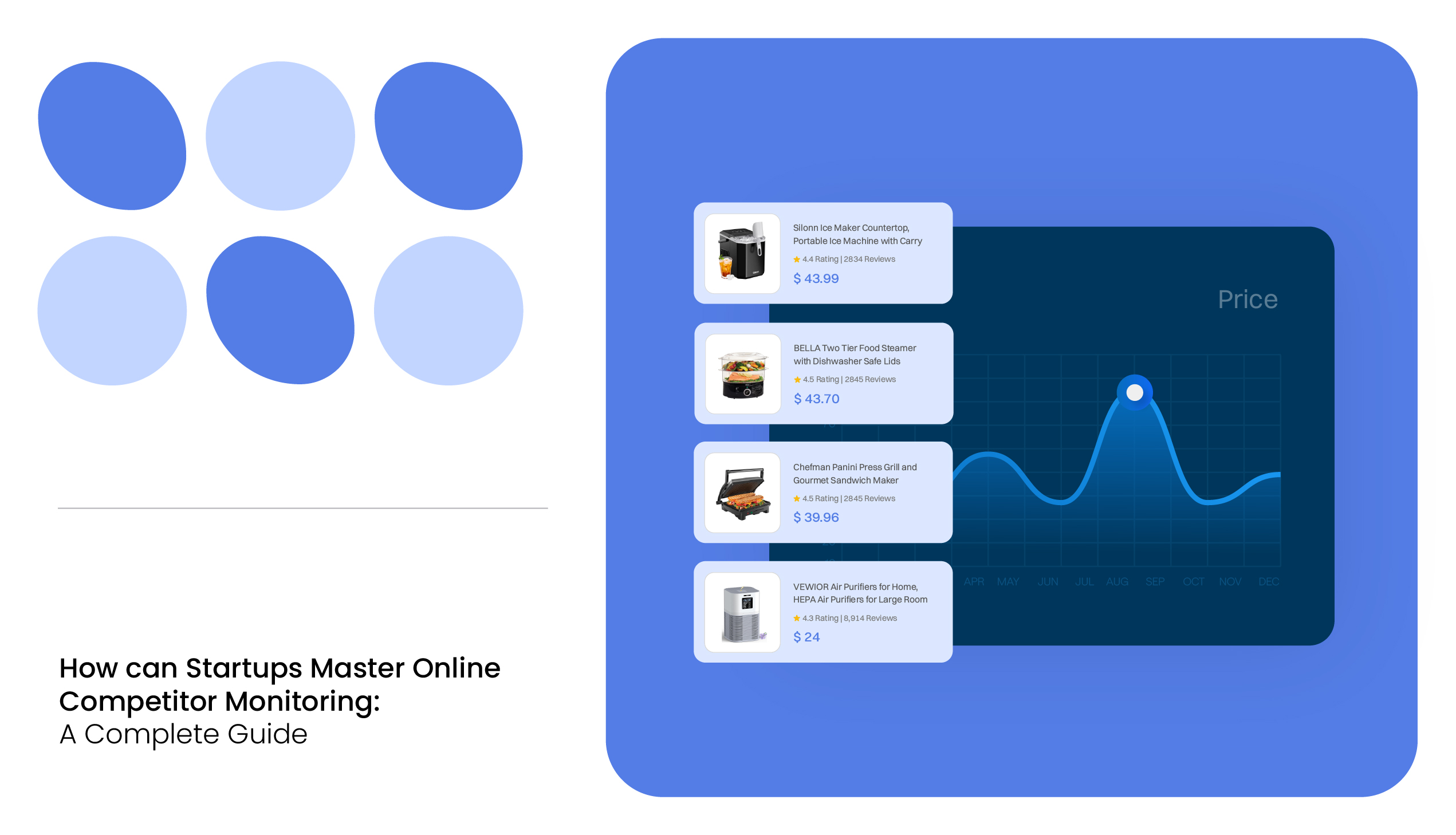When someone buys a laptop, they don’t just want the laptop. They want the experience—a fast processor for seamless multitasking, secure storage to protect their data, a sleek case for portability, and maybe a wireless mouse for added convenience. That’s where upselling and cross-selling come into play.
Upselling encourages customers to go for a higher-end product or add-on, while cross-selling introduces them to complementary items that elevate their original purchase. These strategies are proven ways to boost your revenue while genuinely helping your customers find better solutions.
Let’s explore the differences between upselling vs cross-selling and share actionable tips to help you master both.
What is Upselling?
Upselling is the practice of encouraging customers to purchase a comparable higher-end product, a more expensive item, an upgrade, or an add-on than the one in question.
For example, if a customer adds a $500 laptop to their cart, the store might suggest a $700 version with better features, emphasizing the added value to entice the purchase.
Upselling often involves using comparison charts to market higher-end products to customers. By showing visitors that other versions or models may better fulfill their needs, brands can increase AOV and help users be more satisfied with their purchases.
What is Cross-Selling?
Cross-selling is the act of selling extra products to customers that complement their original purchase. In e-commerce, cross-selling is often utilized on product pages during the checkout process.
For example, a customer buying a mobile phone often views a protective case or earbuds as suggestions while completing the purchase. By suggesting these related products, digital sellers can enhance the customer’s experience and satisfaction with their purchase.
Cross-selling is a highly effective tactic to introduce users to products they didn’t previously know you offered and generate repeat purchases.
Both upselling and cross-selling are often combined to maximize revenue and enhance customer satisfaction. For instance, a retailer might upsell a customer from a basic camera to a professional-grade model while cross-selling a camera bag, tripod, and memory card.
By effectively balancing these strategies, businesses can boost sales while providing a more comprehensive solution to customers’ needs.
Strategies for Successful Upselling
Below are proven methods to effectively encourage customers to upgrade or opt for higher-value products, boosting revenue while meeting their needs.
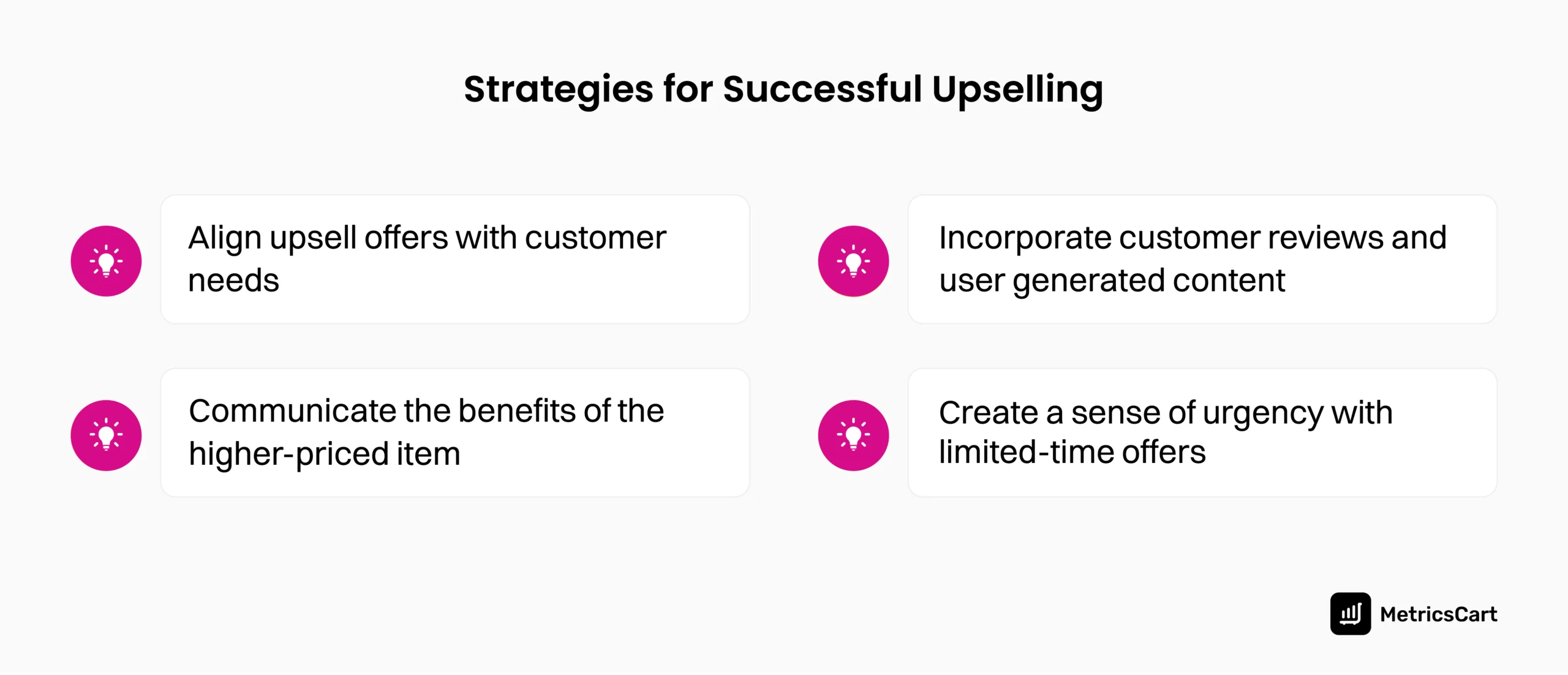
Align Upsell Offers with Customer Needs
The key to effective upselling is personalization. Customers are more likely to consider an upsell if it directly addresses their specific needs, solves a problem, or enhances their experience.
For this, you must analyze past purchases to understand customer preferences and buying habits. For example, if a customer previously bought high-end gadgets, they may value premium add-ons. In addition, you can identify the products they’ve viewed or added to their cart to predict what complements their interests.
This will help you understand the customer’s preferences, pain points, and goals and present an offer that aligns with these factors.
Communicate the Benefits of the Higher-Priced Item
Upselling requires more than offering a higher-priced option—it’s about clearly demonstrating why the upgraded product is worth the extra cost. Customers are more likely to choose the premium option if they understand how it will better meet their needs or enhance their overall experience.
Here, you need to highlight the benefits of the higher-priced item in the PDP and focus on the features that will set it apart from the base option. In addition, you can compare the basic and premium options side-by-side to make the benefits of upgrading more apparent.
Incorporate Customer Reviews and User Generated Content
Customer reviews and user-generated content (UGC) are powerful tools for driving successful upselling. They provide social proof and build trust, helping customers feel more confident about spending extra on a higher-priced option.
You can choose reviews that emphasize the specific advantages of the premium product. For example, if you are upselling a premium kitchen blender, you must highlight reviews saying, “The additional speed settings make blending so much faster, and it handles frozen fruits with ease.”
You can also include star ratings in side-by-side comparisons to show how the premium product outshines its basic counterpart. In addition, you must encourage customers to share photos, videos, or detailed reviews of their experiences.
By showcasing authentic feedback, businesses can bridge the gap between their promises and what customers actually experience. When customers see positive reviews or testimonials, they are more likely to perceive the premium option as valuable and worth the additional cost.
Create a Sense of Urgency with Limited-time Offers
Creating a sense of urgency is a proven strategy in e-commerce to encourage quick decision-making, especially during upselling. Customers are more likely to act when they perceive an opportunity as fleeting or exclusive.
Limited-time offers create the perception that waiting might mean losing out on a better deal or a superior product. So, when you offer a discount on the premium product or bundle, make it valid for a short period.
You can also add countdown clocks or progress bars to reinforce the time limit visually. This encourages customers to make faster decisions instead of delaying or reconsidering.
Strategies for Effective Cross-Selling
Here are practical techniques to recommend complementary products, enhance the shopping experience, and increase order value.
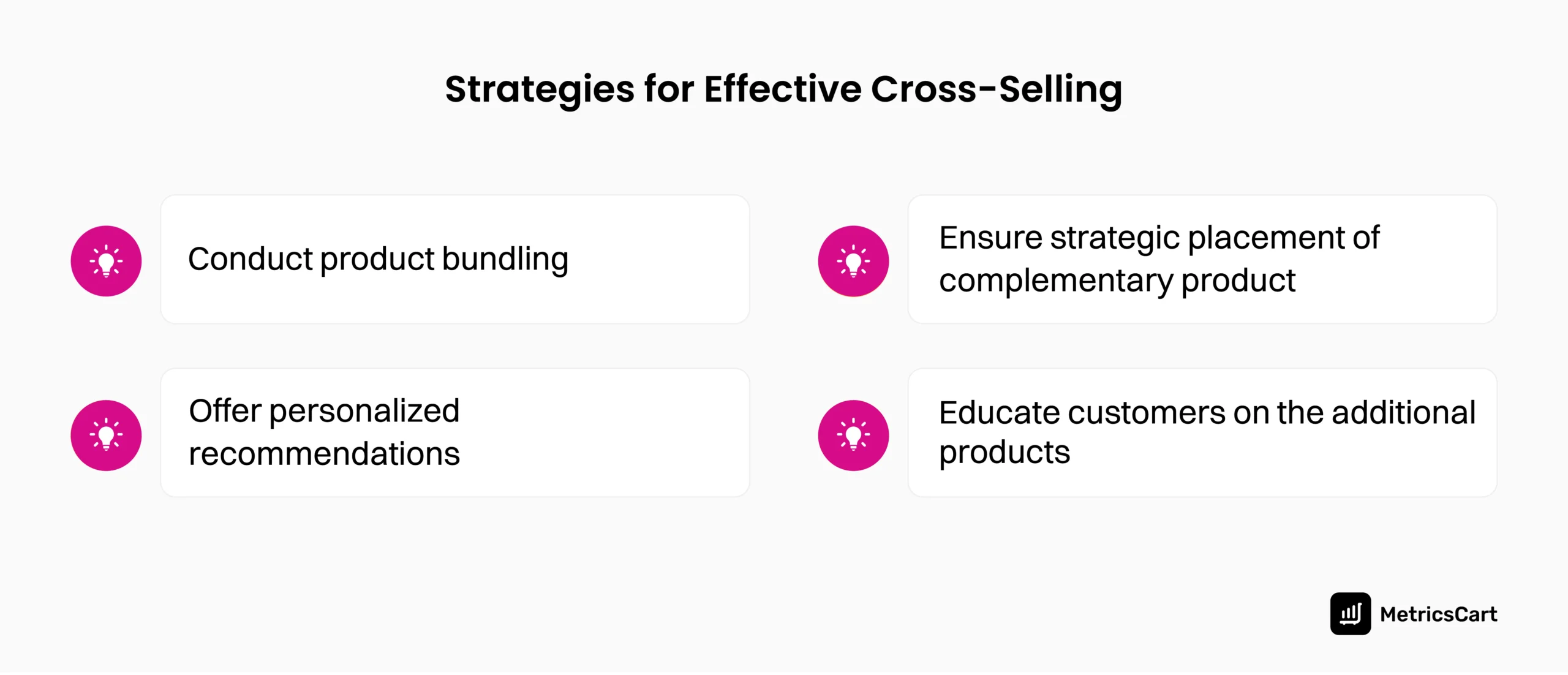
Conduct Product Bundling
Product bundling involves offering complementary products together at a discounted price, creating a perception of added value. It simplifies decision-making and encourages customers to buy multiple items simultaneously.
You must ensure that the bundled items are genuinely complementary and relevant to the primary product. In addition, you can prominently highlight the savings and convenience of buying these bundles, such as “Save $15 when you bundle these items!”
This makes the customers feel they’re getting a deal by purchasing related items together at a lower cost than buying them separately. It also saves customers time by removing the need to search for additional items that complement their purchase, thereby enhancing customer experience and strengthening brand loyalty.
READ MORE | Confused about How to Price Your Product Bundles? Check out Bundle Pricing Explained with Examples
Offer Personalized Recommendations
When you cross-sell more products to your customers, you must analyze their data, such as browsing history, past purchases, and preferences, to suggest relevant products. Unlike generic suggestions, personalized recommendations resonate more with customers because they feel appropriate and thoughtfully curated.
For example, if a customer buys running shoes, recommend complementary items like performance socks, fitness trackers, or hydration bottles. This approach makes the recommendations feel helpful rather than intrusive, increasing conversion rates.

Ensure Strategic Placement of Complementary Product
Displaying complementary product suggestions in strategic locations ensures they are seen at the right time in the consumer buying process. These locations include:
- Product Pages: Highlight related products that complement the main item. For example, a printer’s product page should show compatible ink cartridges.
- Checkout Page: Use “add-on” suggestions with messages like “Complete your order with these recommended items!”
- Follow-Up Emails: Send post-purchase emails suggesting accessories or complementary items based on their recent purchase.
This helps to improve Average Order Value and boost sales per transaction.
Educate Customers on the Additional Products
Educating customers about complementary products is a vital part of an effective cross-selling strategy. While some additional products may seem self-explanatory, others require detailed explanations to help customers understand their value and relevance.
For this, you need to write clear, informative descriptions for complementary products, highlighting their features and benefits. You also need to add videos, infographics, or images that demonstrate how the additional product works and what its benefits are.
When customers see how an additional product enhances their primary purchase or solves a related problem, they’re more likely to add it to their order.
Conclusion
Upselling and cross-selling aren’t just about increasing sales. When done right, these strategies enhance your customer’s experience, meet their needs more effectively, and create long-term brand loyalty. But to truly master these techniques, you need the right tools to track, analyze, and optimize your efforts.
With MetricsCart, you get real-time insights into customer behavior, product performance, and revenue-driving opportunities. It helps to take your upselling and cross-selling strategies to the next level, ensuring every click and interaction drives value for both your business and your customers.
Maximize Your Revenue Potential with MetricsCart.
FAQ
Cross-selling and upselling increase revenue by encouraging customers to purchase additional or higher-value items. They also enhance the customer experience by providing relevant recommendations that meet their needs.
Focus on personalization, ensure complementary product relevance, and display offers at strategic points like checkout or product pages. Highlight clear benefits and use limited-time offers to encourage quick decisions.
Track metrics like average order value (AOV), conversion rates on upsell offers, and revenue generated from cross-sold products. Analyze customer engagement data to identify patterns and optimize strategies.
Yes, pushing irrelevant or overly aggressive offers can lead to customer frustration and potential loss of trust. Overloading customers with options may also cause decision fatigue or abandoned carts.
Avoid recommending unrelated products, neglecting personalization, and using a one-size-fits-all approach. Failing to communicate clear value or pressuring customers into purchases can harm the shopping experience.

